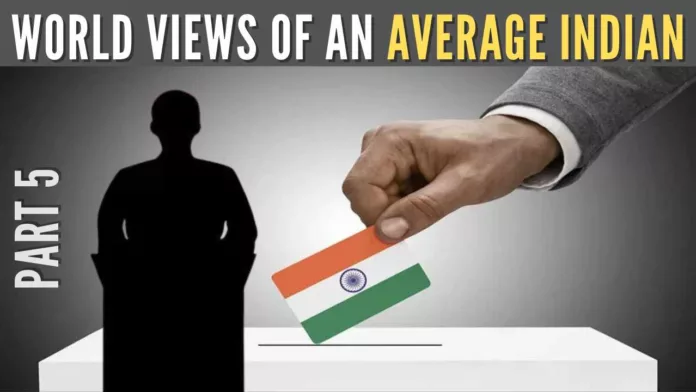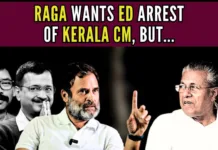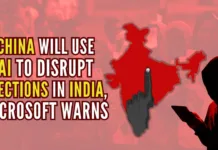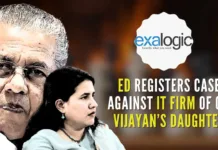
The previous 4 parts of the article can be accessed here Part 1, Part 2, Part 3, Part 4. This is the fifth part
Understanding voting behavior
How voters decide who to vote for is a complex process, following fuzzy logic. Generalizing this in the form of an article is not easy, but I want to attempt it primarily because I use my world views as the basis of my articles.
Knowing this voting process will help political parties understand what they should do to win elections. It will help candidates know how they can win their seats. It will help analysts and media understand how parties and candidates win elections. It will help the electorate how they can fine-tune their choice process so that they get the best results from the electoral process.
Voters receive lots of inputs… from mainstream media, social media, friends, relatives, political parties, and politicians… all the time… more inputs closer to elections.
Voters also receive and perceive benefits from government schemes… both Central and states. Sometimes they may not know whether specific benefits/ problems came because of a Central or state scheme. Voters receive and perceive benefits and problems even from opposition parties.
Let’s see some examples of these:
Political parties in Tamil Nadu have been particularly notorious for bribing voters in cash and kind in exchange for votes. Sometimes cash and/ or goodies are distributed from their own funds. But parties find it even more attractive to bribe voters with government funds by promising these (in cash like the TN government’s Rs.1,000 per month per woman homemaker scheme, and in-kind like Colour TVs, Wet Grinders, etc) as part of the election manifesto.
Kerala went a step further. The Communist government invented a new method and has been using this method for many years now. Each minister employs up to 20 personal staff at a time without going through the usual recruitment process. Such staff are entitled to pension for life if they are in service for just 2 years. Staff leave the service after 2 years and new staff are put in their place. So, each minister can employ up to 40-60 staff during a 5-year term. They are invariably Communist cadres and the government pays lifelong pensions to these party cadres for doing non-existent/ imaginary government work. For more details, please listen to PGurus’ video interview titled “TG Mohandas Pai – Kerala Guv Arif Explodes Over CPM Abuse”.
BJP has implemented many schemes: Jan Dhan Yojana for financial inclusion, Awas Yojana for affordable housing for all, Skill India for employability, Ujwala Yojana for clean cooking for the poor, Ayushman Bharat for free health insurance for the poor, One Rank – One Pension for retired ex-service personnel, Swachch Bharat for keeping India clean, and many more. Every voter can assess what benefits they have personally got (or not) from these schemes.
Similarly, there are projects of the BJP government like infrastructure development in the form of highways, waterways, and airports, schemes like Make In India, Start Up India, Digital India, GST, etc. Every voter can also assess what benefits they have perceived from these projects and schemes, for themselves and for society.
All governments also have the responsibility to provide basic amenities/ services like education, medical facilities, water, sanitation, etc. which they fulfill to varying levels. Every voter can form a perception of their levels of satisfaction with each of these too.
Opposition parties organize agitations/ protests like anti-CAA, anti-farm laws, COVID-related, etc. Every voter can decide if they were benefitted or harmed by these.
Coming back to the broader subject of how voters decide, most voters also have preconceived views on political parties and politicians. Some of these are on the basis of their clan (of the parties and/ or candidates) like religion, caste, language, nativity, broad political leanings as liberals/ conservatives, etc.
This is an ongoing process all through the lifetime of the voters, and it happens unconsciously. Different voters are politically conscious and interested to a different extent.
Closer to the elections, political parties announce their manifestos, which are essentially promises they make.
Voters process all these inputs and develop tentative ideas of who they want to see elected in the next local body, state, and/ or central elections. Most often, they choose political parties and sometimes even alliances and/ or candidates to vote for.
Many voters also decide on the parties, alliances, and/ or candidates to vote against.
In this process, some voters become die-hard followers of certain parties, and others keep their options open. Similarly, some voters become die-hard antagonists of certain parties.
A lot of strong inputs are required, for or against the party of their choice, for die-hards to change their minds.
Consequently, when there is a majority of loyal, committed voters for any party (or candidate) in any constituency, that constituency becomes committed to that party (or candidate). It is difficult for opponents to win such constituencies, except during waves against that party (or candidate).
Some are floating voters who are not committed to any party and change their affiliations based on the changes in the political scenario. It’s mainly these voters who swing seats. When there are a lot of floating voters in any constituency, it becomes a swing constituency, the best target for the opposition.
While casting of votes happens individually, often there is also a collective/ group thinking and planning at work beforehand. When one group of voters does this, often there are one or more opposing groups that get wind of it and plan a counter-strategy. Typically, this happens along religious and caste lines. This is why group decision-making may not always be a good idea.
Though voters may want the parties and candidates they support to win, if they get the sense that their candidate is unlikely to pose a serious challenge to the candidate they want to lose, they may switch their vote to another opposition candidate who has a better chance to pose a more serious challenge. This is tactical voting.
There is another class of voters who have the peculiar desire to vote for the winning candidate, whoever it may be. This is the bandwagon effect.
Opinion polls with segment-wise (religion-wise, caste-wise, etc) analysis give a sense of the relative percentage of votes of the parties and candidates, and they lead to the last two types of voting. The problem with these is, that we may not be able to know the exact relative support base of the various candidates and parties, as they are skewed by switched voting.
Some voters, usually undecided, make up their minds impulsively just before voting. This is the reason why parties try to influence voters one last time just on the date of or even at the time of casting of votes.
As we can see, the process is somewhat stochastic and fuzzy, yet there is some method in the madness.
The aggregate of all such types and fuzzy processes of the voters determine the candidates and parties who win elections.
Note:
1. Text in Blue points to additional data on the topic.
2. The views expressed here are those of the author and do not necessarily represent or reflect the views of PGurus.
For all the latest updates, download PGurus App.
- How BJP can get 33%+ vote share in TN - April 1, 2024
- A transparent, equitable electoral funding alternative - March 19, 2024
- How TN BJP can come to No. 1 or No. 2 in 2024 LS polls - January 11, 2024










